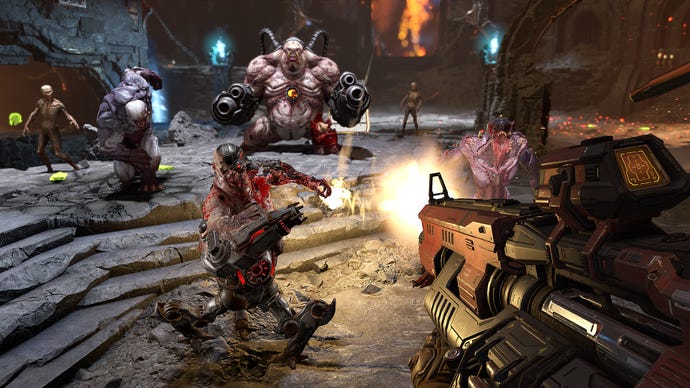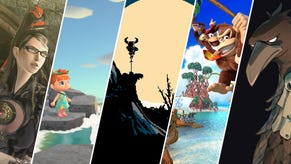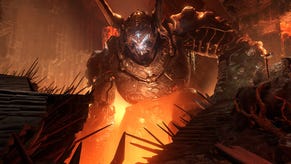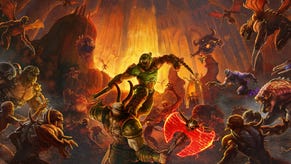Adding Dash To Doom Eternal "Broke the Game For Quite a While," Developers Say
Why Doom Eternal's developers are calling it their Evil Dead 2.
This article first appeared on USgamer, a partner publication of VG247. Some content, such as this article, has been migrated to VG247 for posterity after USgamer's closure - but it has not been edited or further vetted by the VG247 team.
When a revamp of the classic Doom hit in 2016, it seemed like it came out of left field. It won our own Best Surprise award, but in hindsight, the writing on the wall was apparent. The time was ripe for a Doom revival. So what happens after reincarnation?
We talked with executive producer Marty Stratton and creative director Hugo Martin, who say that the journey from Doom 2016 to Doom Eternal was challenging.
"We knew that 2016 surprised people," says Stratton. "And that we wouldn't have that element of surprise moving forward. So to really surprise people again, we needed to raise the bar across the board."
Martin compares Doom to the Evil Dead series; specifically, that if Doom 2016 is Evil Dead, then Doom Eternal is Evil Dead 2, the kind of game that "finds itself." The team dove into past works as they've done for many Doom games in the past, with Doom 64 and the single-player of Quake 1 surfacing as big influences for what would become Eternal.

Doom Eternal has big plans. You'll fight demons, slay them by the dozen, and even meet God. Well, "a god," as Martin tells us. Doom Eternal has a God, angels, and a heaven created for the game. ("We didn't take a scouting trip," jokes Stratton.) They tell me the lore and mythos is still a large part of Doom's ambient and optional storytelling, for those seeking larger answers about who the Doom Slayer is, why everyone fears him, and if he's even human.
"Dash Broke the Game for Quite a While"
But the core of Doom is, and always will be, the combat. Everything in Doom has been sped up, thanks to a host of traversal mechanics that the developers say broke the game when they initially added them.
"Dash broke the game for quite a while because it just meant that nobody could touch you," says Martin. "So with the A.I. tuned the way they were from Doom 2016, and then we introduce dash; we gave the player these new abilities which felt great in isolation, when the A.I. didn't stand a chance. Sort of like the race car got faster, but the race track needed to get harder."
While being the Doom Slayer is about having a huge variety of weapons, gadgets, and general carnage at your disposal, it only excels when the things you're tearing to shreds are equally lethal. Doom isn't a musou game filled with endless waves of nobodies—the creatures you're dispatching are demons from hell, and normal combatants don't stand a chance. A critical part of the power fantasy, according to Stratton, is the opportunity to be challenged.
"When you get to those moments of like, I've been challenged, push push pushed, and then I overcome it," says Stratton. "And that carries on over the course of the entire campaign. It's the feeling of being that powerful has been earned and it's just a super rewarding experience."
The difficulty doesn't just come from demons though. Doom is also about the arena itself, which can be as much an asset or obstacle as the mega-demon spewing fire at you. Adding movement and areas that demand agility, acrobatics, and even swimming puzzles allows Doom Eternal to not just fill its halls with demons, but every transitional area with mythos and interesting architecture as well.
"We're able to go beyond just a two-dimensional plane," says Martin. "Like here, walk down that hallway to the next area, and then after that, walk down another hallway to the next screen. Whether you're jumping across chasms in space or you're inside some labyrinth, you know there's always something new that Doom Eternal is going to throw at you and every bit of it is engaging."
The way the enemies and levels combine in sync is what makes Doom Eternal click. Where it was a revelation in 2016, id Software looks to be taking the next step forward with Doom Eternal. They're filled with what Martin calls "combat puzzles," or these mixes of difficult in-the-moment problem solving involving hordes of hell-demons and intricate battle arenas, and they're ramped up to a scale beyond what Doom 2016 was capable of.
"The worlds and the levels you go to," says Stratton. "From literally moment one to the last moment are things that you know people have never seen before in a Doom game."
If Doom 2016 was the start of something new, Eternal looks to cement that place in history. With its feet under it and a team confident in what they're putting together, it seems like Eternal is set to reclaim the Doom Slayer's spot among the pantheon of modern shooters.









